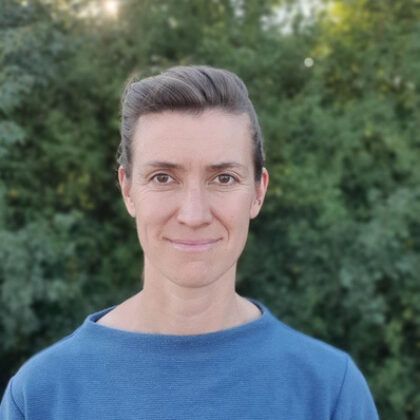Nature-based art therapy
Hot topic
In our latest hot topics article looking at developments in art therapy, Dr Zoe Moula and Katarina Horrox talk about nature-based art therapy.
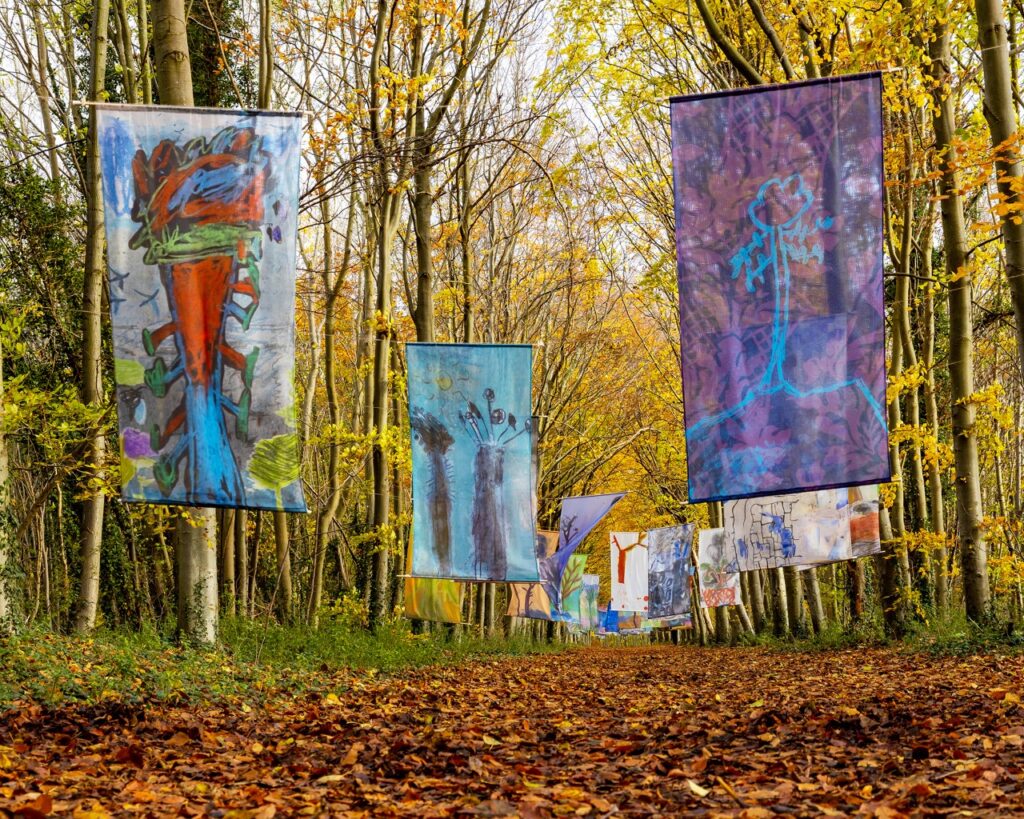
What is nature-based art therapy?
Nature-based art therapy is when art therapy is delivered in natural settings, such as gardens or parks, or any outdoor spaces, such as hospital or school grounds. Beyond benefits for people’s physical, mental, emotional and social health, nature-based art therapy can increase people’s connection with nature, which in turn promotes care for, and protection of, nature.
There are also terms that have been used interchangeably with nature-based art therapy. Some of the most common ones are environmental, climate-informed, and eco art therapy. In these terms, the emphasis lies more on the environment, climate change and ecology, whereas nature-based art therapy is a slightly broader term. The emphasis of the sessions may not be directly related to the ecological crisis or climate change, although conversations of this kind may of course arise while spending more time in nature and noticing changes in the environment. Choosing carefully the term that best describes each practice is important so that art therapists are clear on what they can offer and avoid confusion.
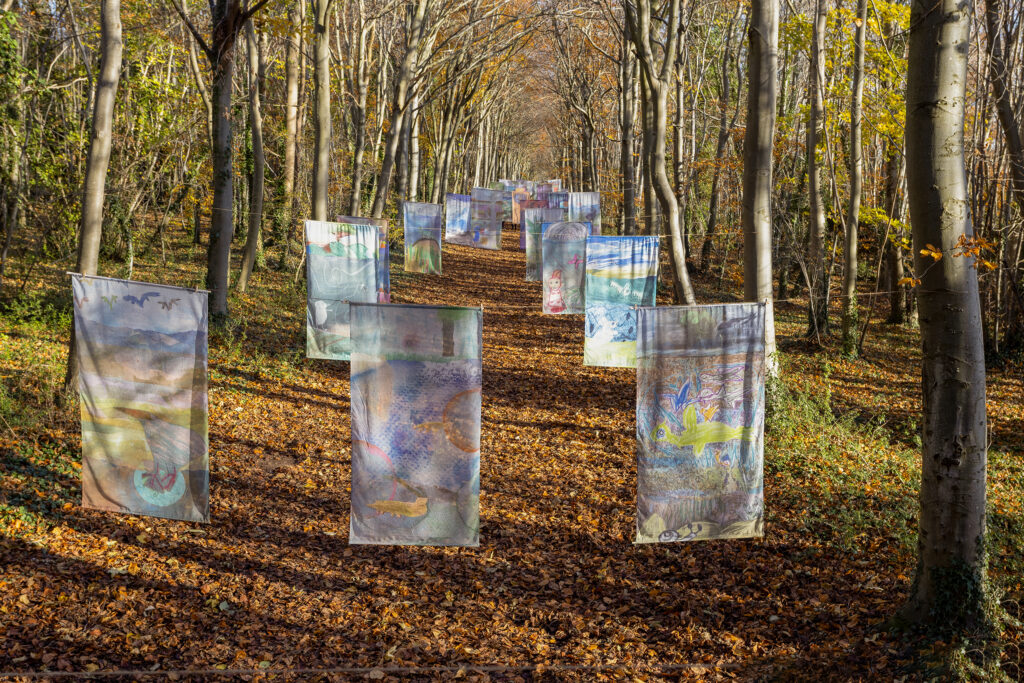
Why nature-based art therapy is relevant today
A nature-based art therapy practice is relevant today for a number of reasons: it can reduce barriers to therapy, promote an embodied experience and support engagement with the wider world.
However, one increasingly critical reason for its relevance is its potential to engage with the impact of climate change and environmental crisis. In this context, there is an increasing demand for art therapists to work with people who have experienced displacement and forced migration. There is also a need to work with people who have experienced ecological grief, eco-distress or eco-anxiety – with a higher demand expected in the younger generations. As such, art therapists can provide valuable support for people affected by environmental disasters and people experiencing challenging emotions related to the future of the planet.
Many authors suggest that climate change and biodiversity loss are the result of people’s broken relationship with nature (Richardson, 2023). The benefit of delivering art therapy in nature is that, when people’s personal healing is initiated through immersion in nature, it can lead to increased connection with and care for nature (Clinebell, 1996). This has the dual benefit that healing in nature is also healing for nature (Harper et al., 2019; Buzzell & Chalquist, 2009).
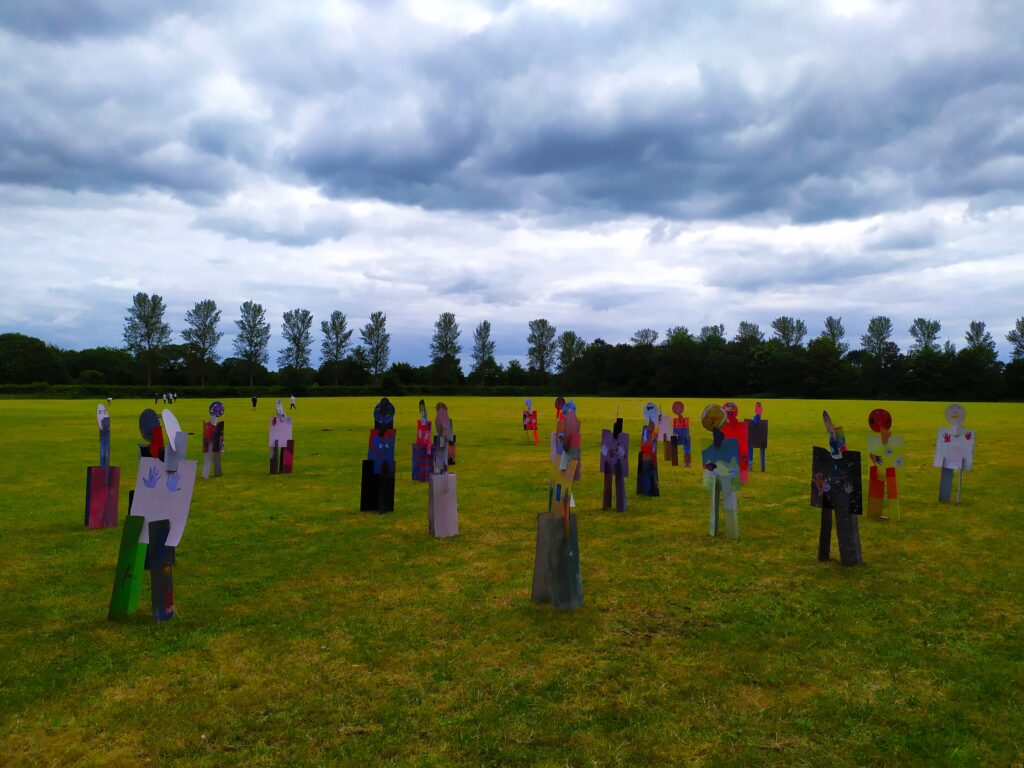
Nature connection and art therapy
Nature-based art therapy can directly address the five pathways to nature connection (Richardson & Butler, 2022), which are:
- Senses: exploring and experiencing nature through our senses.
- Beauty: seeking and appreciating the beauty of nature.
- Emotions: noticing and welcoming the feelings nature inspires.
- Meaning: sharing nature stories and what nature means to us.
- Compassion: caring for nature and establishing nature connection as a way of life.
Making these pathways explicit when reporting art therapy research and practice can support other professionals to understand the crucial role arts can play in our (re-)connection with nature. With the national and international prioritisation of practices that promote net zero ambitions and sustainability, healthcare providers, commissioners and policymakers may be increasingly interested in practices and therapies that can support both the human and planetary health. This is an opportunity for art therapists to demonstrate the full potential of their practice.
How this approach can help
Nature-based art therapy can be beneficial in de-stigmatising ‘therapy’, creating a more accessible space for people who may find it challenging to engage in traditional therapeutic or clinical environments, and (re-)connecting people with nature. With nature as ‘co-therapist’, we can approach existential themes of impermanence, life and death, loss and new beginnings (Boon, 2019; Hermann, 2020). We may also experience personal or spiritual growth and find meaning in life that fosters change, by witnessing the beauty and awe inspired by nature (Summers & Vivian, 2018).
For example, in a case study we published, a client worked with different materials but focused on ‘damaged’ objects, like torn leaves or broken twigs. She felt these represented different parts of herself. At the end of each session, the therapist would take a photograph of the artwork as part of the records of the session. For the client, this became an important moment. Katarina writes, ‘Perhaps the photograph served as a shared recognition of the injury she had experienced in her internal world.’ (Horrox, p92, 2025)
To conclude, we will leave you with a powerful quote from a child who shared their experience of an arts-in-nature intervention:
It was like I was not a person, it was like I was the nature
Child quoted in Moula & Lee 2023
Learn more about nature-based art therapy
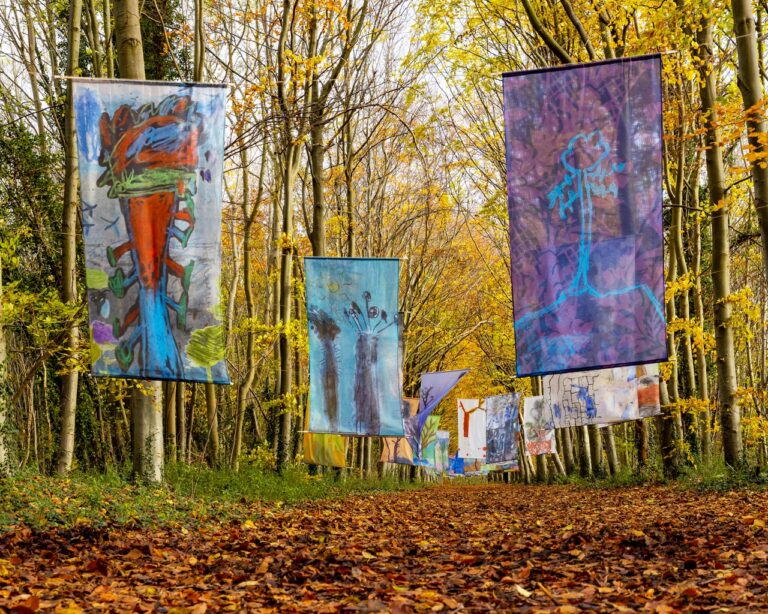
References
- Richardson, M. (2023). Reconnection: Fixing our broken relationship with nature. Pelagic Publishing.
- Clinebell, H. (1996). Ecotherapy: Healing ourselves, healing the Earth. Routledge.
- Harper, N.J., Rose, K. Segal, D. (2019) Nature-based therapy: A practitioner’s guide to working outdoors with children, youth, and families. New Society Publishers.
- Buzzell, L., Chalquist, C. (2009). Ecotherapy: Healing with nature in mind. Sierra Club Books.
- Richardson, M. & Butler, C.W. (2022). The nature connection handbook: A guide for increasing people’s connection with nature. University of Derby.
- Boon, L. (2020) The wild inside: Offering children natural materials and an ecopsychological understanding of self within art therapy. In I.S. Heginworth & G. Nash (Eds) Environmental arts therapy: The wild frontiers of the heart. Routledge.
- Harper, N.J., Rose, K., Segal, D. (2019) Nature-based therapy: A practitioner’s guide to working outdoors with children, youth, and families. New Society Publishers.
- Summers, J.K., & Vivian, D.N. (2018). Ecotherapy – A forgotten ecosystem service: A review. Frontiers in psychology, 9, 1389.
- Moula, Z., & Walshe, N. (2025). Arts in nature with children and young people: A guide towards health equality, wellbeing, and sustainability (p. 180). Taylor & Francis.
- Moula, Z., Walshe, N., & Lee, E. (2023). “It was like I was not a person, it was like I was the nature”: The impact of arts-in-nature experiences on the wellbeing of children living in areas of high deprivation. Journal of Environmental Psychology, 90, 102072.

